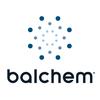Explore all the information on
Vitamins and minerals in dairy cattle nutrition
Welcome to the page about Vitamins and minerals in dairy cattle nutrition of Engormix; a source of knowledge on Vitamins and minerals in dairy cattle nutrition.
X-Zelit was tested at the Cornell University. In a ProDairy webinar, Tom Overton is discussing the methods to prevent hypocalcemia and some of the results from the X-Zelit trial is presented. Watch the entire webinar here....
Comments : 0
Recommendations: 1
Introduction • Most cows are unable to elude some level of hypocalcemia in the immediate postpartum period, with 40 to 70% of multiparous cows developing subclinical hypocalcemia (SCH; Reinhardt et al., 2011; Caixeta et al., 2015; Neves et al., 2017). • Supplementing anions in prepartum rations is a common strategy to improve blood Ca concentrations however, SCH is often not eliminated (Leno et...
Comments : 3
Recommendations: 3
Animal feed organic trace minerals market demand is depicting a rapid expansion rate as these minerals are used in animal feeds to enhance bioavailability and increase the gut absorption. The organic trace minerals assist in activating essential enzymes and hormones which proves vital for livestock’s metabolic processes. Rising consumption of meat, poultry, and dairy products has given a considerable push to the global animal feed organic trace minerals market size. As per statistics,...
Comments : 7
Recommendations: 2
Developments in transition cow nutrition Major advances in transition cow nutrition were made in the decade prior to the 2001 edition of the National Research Council publication Nutrient Requirements of Dairy cattle (Bell, 1995; Grummer; 1995). This led to establishment of the first NRC close-up cow nutrient requirements. Now group feeding close-up dairy cows a specialized ration is an established practice. Close-up cow...
Comments : 0
Recommendations: 1
Cornell University tested the efficiency of a calcium binder (X-Zelit®) for preventing hypocalcemia. Feeding low level calcium in the prepartum diet has shown to be effective in improving the calcium level at calving. However, as this is difficult to obtain using the commonly used feeds, binding the dietary calcium using X-Zelit can mimic the low calcium approach. Preliminary results from the trial were presented at the annual Cornell Nutrition Conference...
Comments : 4
Recommendations: 2
Introduction During the transition from pregnancy to lactation increased energy and calcium demands for colostrum and milk production, combined with a decline in dry matter intake (DMI) around parturition, can result in negative energy balance (NEB), increased lipid mobilization [1,2] and a reduction in plasma concentrations of calcium [3,4]. These changes increase the risk...
Comments : 1
Recommendations: 0


Boosting Dairy Cow Performance: The Story Behind a Natural Nutritional Solution
Suggested link
INTRODUCTION An adequate supply of macro and micronutrients, such as trace minerals (e.g., Zn, Mn, Cu, Co), is important for ensuring an optimal transition from pregnancy to lactation (Andrieu, 2008). For instance, trace minerals have critical roles in a variety of physiological process, particularly antioxidant defense, and a deficiency may depress immunity especially in peripartal or transition cows (Spears and Weiss,...
Comments : 0
Recommendations: 5
ReportsWeb.com added “Global Methionine Market Research Report 2017” to its vast collection of research Database. The report is spread across 107 pages and supported by 8 company leaders.
The Global Methionine Market Research Report 2017 is a professional and in-depth study on the current state of the Methionine Market. This report studies Methionine in Global market, especially in North America, Europe, China, Japan, Korea and Taiwan, focuses on top manufacturers in...
Comments : 0
Recommendations: 0
INTRODUCTION Trace mineral elements such as Cu, Cr, and Zn have important roles in the health and immunity of peripartal dairy cows (Spears and Weiss, 2008). Minerals have been commonly supplemented to cattle in the form of inorganic salts, preferably as sulfates; however, the development of organic forms of trace minerals, such as minerals complexed with AA, minimize the risk of mineral antagonism and enhance absorption...
Comments : 1
Recommendations: 0
New feeding trial results from neutral research institute in Germany, shows increased protein inflow in the small intestine and optimized efficiency in milk production. ProtiSpar® is a combination of essential oils that affects the bacterial metabolism of protein in the rumen.
...
Comments : 0
Recommendations: 0
Background A recent study by the SDSU Dairy and Food Science Department investigated the effects of water quality on heifer preference and drinking behavior. Providing good quality water to livestock is a major challenge in the Midwest. Eastern South Dakota groundwater, which is used for drinking, industry, and agricultural purposes is hard, with high mineral content. Calcium and magnesium concentration affects this hardness....
Comments : 0
Recommendations: 0


Boosting Dairy Cow Performance: The Story Behind a Natural Nutritional Solution
Suggested link
Introduction The transition period is the most-critical phase in the productive life of high-producing dairy cows and it is characterized by decreased liver function and increased inflammation and oxidative stress [1, 2]. Although inflammatory pathways play important roles in normal immune function helping the body adjust to and overcome infection with the purpose of restoring homeostasis, uncontrolled inflammatory...
Comments : 1
Recommendations: 0
Many factors contribute to achieving an age at first calving of 24 months for heifers. John Fish from Vitfoss highlights the importance of calf health and mineral nutrition. There’s been much discussion on the topic of the optimal age at first calving (AFC) however numerous studies have shown that targeting an age of 24 months at first calving can be optimal for lifetime...
Comments : 3
Recommendations: 0
Dr. Jack Garrett, Ph.D., Director of Technical Services & Research at QualiTech, speaks about organic nutrition in the XXI century at the Latin American Poultry Congress, El Salvador. ...
Comments : 3
Recommendations: 1
Costly products are always special for mankind like silver, gold, platinum, diamond and so on. Interestingly, there are still more metals costlier than this. Californium is considered to be the costliest metal which will cost you a Rs. 166 Crore/ gram. But their use for everyday thriving is almost nil. Minerals need not to be costly to give a better health every day. Costly for mankind is the product’s benefits. Minerals are both heroes and villains for a...
Comments : 1
Recommendations: 0
One of the main problems faced by cattle raising are metabolic diseases. Many of these diseases are of nutritional origin, besides the stressful effect for animal overexploitation, and the high production requirements that cause that nutritional support is not sufficient. Faced with this problem, a correct formulation of the ration, as well as a supplementation with minerals, vitamins and amino acids becomes essential (McDowell, 1984).
...
Comments : 2
Recommendations: 0
Modern analytical techniques and instrumentation make it possible to accurately determine trace mineral concentration in feed and animal tissues. Unfortunately, however, such determinations provide no information on utilization of the minerals by animals. Utilization involves the concept of bioavailability and is critical in the selection of a suitable source of the mineral. In terms of trace minerals, bioavailability may be defined as the proportion of an ingested mineral that is absorbed,...
Comments : 1
Recommendations: 0


Boosting Dairy Cow Performance: The Story Behind a Natural Nutritional Solution
Suggested link
Introduction It has been established beyond doubt that micronutrients play important role in livestock production. Mineral supplementation in livestock improves health, enhances growth, reproductive and productive performances. Role of mineral in livestock The minerals have been broadly classified depending upon the concentration in the body and amount required in the diet. The minerals...
Comments : 1
Recommendations: 0
Everybody talks about the dosage of organic selenium in animal feed for all species. What are your suggestions? ...
Comments : 0
Recommendations: 0




.jpg&w=3840&q=75)














